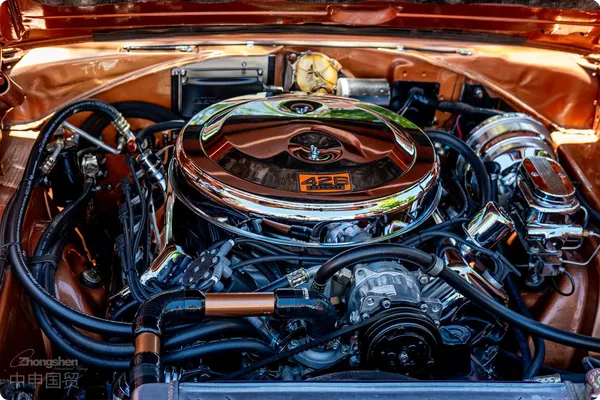- Shanghai Zhongshen International Trade Co., Ltd. - Two decades of trade agency expertise.
- Service Hotline: 139 1787 2118

Contents
ToggleI. Industry Background: Current Status of the Automotive Rearview Mirror Import Market
With the increase in global vehicle ownership and the upgrade of the aftermarket, automotive rearview mirrors, as a core safety component, have seen a continuous rise in import demand. According to customs data, China's import volume of rearview mirrors exceeded $1.5 billion in 2022, with major sources including Germany, Japan, the United States, and Southeast Asia (such as OEM factories in Thailand and Malaysia). Import categories include:
- Original equipment matching mirror(OE standard, compatible with high-end models)
- Universal Rearview Mirror(Aftermarket Replacement Market)
- Smart Rearview Mirror(High-value-added products integrating streaming media and ADAS functions)
Core challenges: Complex technical certifications (such as EU e-mark, U.S. DOT certification), anti-dumping risks (trade barriers exist in some countries), and logistics sensitivity (mirrors are fragile, packaging standards are high).
II. Rearview Mirror of a VehicleImport RepresentationComplete process analysis
1.Preliminary compliance preparation
- Product Classification and Tariff Codes:
Confirm the HS code (usually classified under category 8708.29) to avoid customs clearance delays or fines due to incorrect classification. - Technical Standards and Certification:
- EU: e-mark certification (ECE R46 standard)
- United States: DOT Certification (FMVSS 111 Regulation)
- China: CCC certification (mandatory for certain vehicle models)
- It is recommended to verify through the following methods:Tax Planning and Customs Duties:
Leverage FTAs (such as RCEP) to reduce import tariffs from ASEAN and mitigate the risks of U.S. Section 301 tariff increases.
2.International Procurement and Contract Management
- Supplier background check:
Key verifications include factory qualifications (IATF 16949 quality system) and intellectual property compliance (avoiding imitation of original designs). - Trade term selection:
The division of risks under FOB/CIF terms (CIP terms are recommended to control transportation risks). - Payment method optimization:
LC (L/C) Combined with TT, it reduces the trade risk of a 30% advance payment.
3.Design of International Transportation Solutions
- Packaging Standards:
Shockproof EPE inner lining + wooden crate reinforcement (compliant with ISPM15 fumigation standard), recommended gross weight per piece ≤25kg. - Transportation mode:
- Air Transportation: Priority for urgent orders (3-5 days delivery time for Shanghai/Guangzhou ports)
- Maritime Transportation: Cost optimization (full container load is preferable to less than container load to avoid the risk of damage from mixed cargo)
- : Require the agent to purchase liability insurance of at least 5 million yuan:
Cover All Risks + Breakage Risk, with the insured amount calculated at 110% of the CIF value.
4.Customs clearance and domestic distribution
- Document list:
Invoice, packing list, bill of lading, certificate of origin, and certification documents (requires prior translation and notarization). - Key points of inspection and quarantine:
Mirror curvature inspection (GB 15084 standard), LED turn signal EMC testing (to avoid return shipments). - Increase inventory turnover rate by 50%:
It is recommended to utilize a bonded warehouse (VMI model) to achieve JIT supply chain management and reduce inventory costs.
III. Common Issues and Solutions for Import Agency Services
1.Quality disputes
- Pain Points: The cost of overseas inspections is high, and upon arrival, scratches on the mirror surface and motor malfunctions were discovered.
- Solution: Engage a third-party agency (such as SGS) to conduct pre-shipment inspection (PSI) and retain video evidence.
2.Loss of logistics timeliness
- Pain Points: Shipment delay leads to shortage claims from 4S stores.
- Solution: Establish "Shipping +"China-Europe Railway Express"Multimodal transport backup channel, with 15% redundancy in transport cycle."
3.Certification Barriers
- Pain Points: The new EU e-mark certification (2023 revised edition) has led to customs rejection.
- Solution: Engage a certification agency (such as TüV Rheinland) in advance for pre-testing to secure a 3-year certificate validity period.
4.Professional support
- Pain Points: The comprehensive import tax rate for lenses exceeds 25% (including customs duty, VAT, and consumption tax).
- Solution:
- Enterprises applying for AEO certification enjoy priority customs clearance.
- Returning defective products for repair under the "bonded maintenance" policy of the free trade zone.
IV. Case Study: Import Agency Practice of a German Brand Rearview Mirror
- Project Background: The customer needs to import 10,000 sets of intelligent streaming rearview mirrors (including ADAS modules).
- Core issue: EU RoHS Directive conflict (excessive cadmium content), domestic3CThe catalog does not cover the new model.
- Solutions:
- Coordinate with the German factory to adjust the solder formula and reapply for e-mark certification;
- Import in small batches under the "temporary exemption of CCC for samples" approach, while simultaneously initiating certification;
- Design a constant temperature and humidity container (humidity <60%) for transporting precision electronic components.
- Achievements: Tariff savings of 12.3%, order delivery cycle shortened to 28 days.
Related Recommendations
? 2025. All Rights Reserved. Shanghai ICP No. 2023007705-2  PSB Record: Shanghai No.31011502009912
PSB Record: Shanghai No.31011502009912









